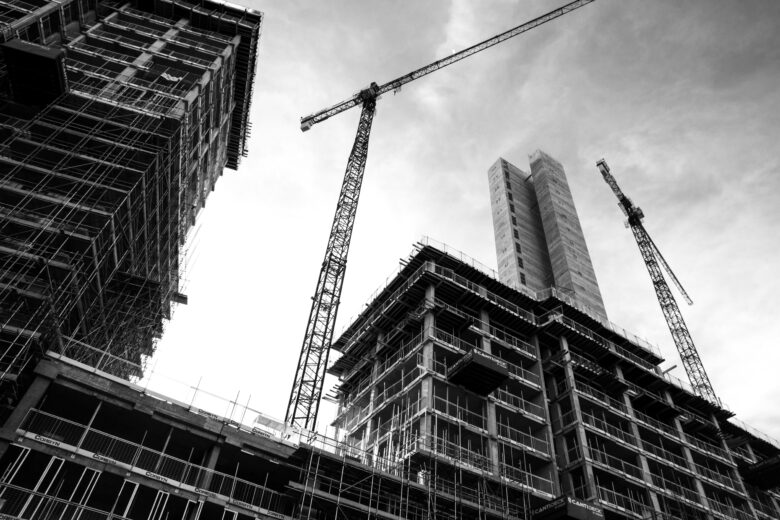Getting Golden Thread Ready
By Kemi Oguntoye, Associate at SAY
If you are a developer, landlord or investor with an interest in a residential or mixed used scheme with two or more apartments, then the Building Safety Bill and the Golden Thread Regulations will apply to you.
It will have profound consequences for the UK construction and leasehold sectors, fundamentally changing the nature of evidencing to the Building Safety Regulator and to residents.
Of particular interest are schemes, which are above 18 metres, deemed to have a high risk impacting safety to the structure and to people from fire. The Bill will apply to established existing schemes that are occupied, schemes under construction and prospective schemes, regardless of whether you are a small, medium or large organisation or if your scheme is BTR (Build to Rent), BTS (Build to Sale), mixed use, a care home, or a hospital.
It is a crucial step to ensuring the safety of residents in apartment blocks. The Building Safety Bill targets two transformational and interlinked areas; prioritising the residents’ voice, creating a Safety Case and The Golden Thread.
Developers will be familiar with a digital health and safety file for their buildings.
The Golden Thread is an enhanced version of this, it is the digitally recorded details of a building’s design intent, construction and amendments passed from the Duty Holder in the design and construction phases to the Responsible Person (the entity receiving the service charge income or rent during occupation) and onto the residents, as part of a resident engagement strategy.
Equally important is the management information system where the data is recorded. The Golden Thread is concerned with how information about a scheme is stored and managed. There are nine Golden Thread principles including:
- Accurate and Trusted
- Residents feel secure in their homes
- Cultural change
- Single source of truth
- Secure
- Accountable
- Understandable/consistent
- Simple to access (accessible
- Longevity/durability and shareability of information
If done right, it presents an opportunity for our industry to demonstrate its commitment to structural safety, following the well-publicised allegations of new build shortcomings and to repair its reputation with some residents. The Act will allow residents to retrospectively pursue claims about defects against the developer for up to 15 years.
The Act will allow residents to retrospectively pursue claims about defects against the developer for up to 15 years.
Structural and fire safety will become an important consideration to a) prospective residents (renters and purchasers) and b) their professional ecosystem of advisors (lenders, insurers, agents and conveyancing solicitors). Ignoring the Building Safety Bill and failing to prepare now for its arrival is expected to:
- Increase insurance premiums or prevent some developments from obtaining the required insurances
- Reduce the sales/rental valuations of schemes, decreasing the financial returns investors can expect
- Extend construction timelines, increasing build costs – if a scheme is called in by the Regulator
- Delay practical completion, preventing residents from occupying schemes and prolonging developer void costs
- Expand financial and penal sanctions imposed by the Regulator for the worst offenders.
- Yet, without a cultural change today to how buildings are built and how information is handled over its lifecycle, unprepared developers, investors and landlords will experience further reputational damage.
What Needs to Change?
Developers, landlords and investors should:
- Consider the golden thread components of a scheme as a separate package that will need to be demonstrated, verified and kept updated.
- Approach the golden thread of evidence from a whole lifecycle perspective.
- Check contracts for potential golden thread gaps – ensuring suppliers, agents, contractors, sub-contractors, design & consulting teams deliver the packages needed to prove a building is safe. This includes but is not limited to structure, compartmentation, protective elements, evacuation routes, risks, preventative measures and risk analysis rationale.
- Ensure that you have the appropriate IT management structures in place to help you retain and extract the right information when required.
- Prepare the safety information in a format that is appropriate for the Regulator and residents.
- Remember that the Responsible Entity remains accountable for compliance, and you will not be able to pass the legal obligations to the design and construction teams or management teams.
If you are an investor, landlord, or developer of new, under construction or existing building and you need help putting in place a golden thread, then contact SAY and we’d be happy to get you golden thread ready. At SAY, we are helping our forward-thinking clients to proactively prepare for the implementation of the Bill. We are mitigating against the non-compliance risk by designing in the delivery of an effective Golden Thread today.
We encourage others to not delay and to follow suit. We have a solid understanding of PropTech platforms in the market, resolving operational gaps and how landlord-developers can optimise people and data to deliver a golden thread across the whole life cycle. So, if you are wondering where to start on your Golden Thread journey, do get in touch. We would be very happy to share our technical insights; creating an easy-to-understand roadmap to get you Golden Thread ready.
We are an award-winning multi-disciplinary advisory business. As asset management experts, we champion the best our sector has to offer, are dedicated to improving outcomes for residents and are obsessively focussed on delivering sustainably safe communities.

Comments are closed.